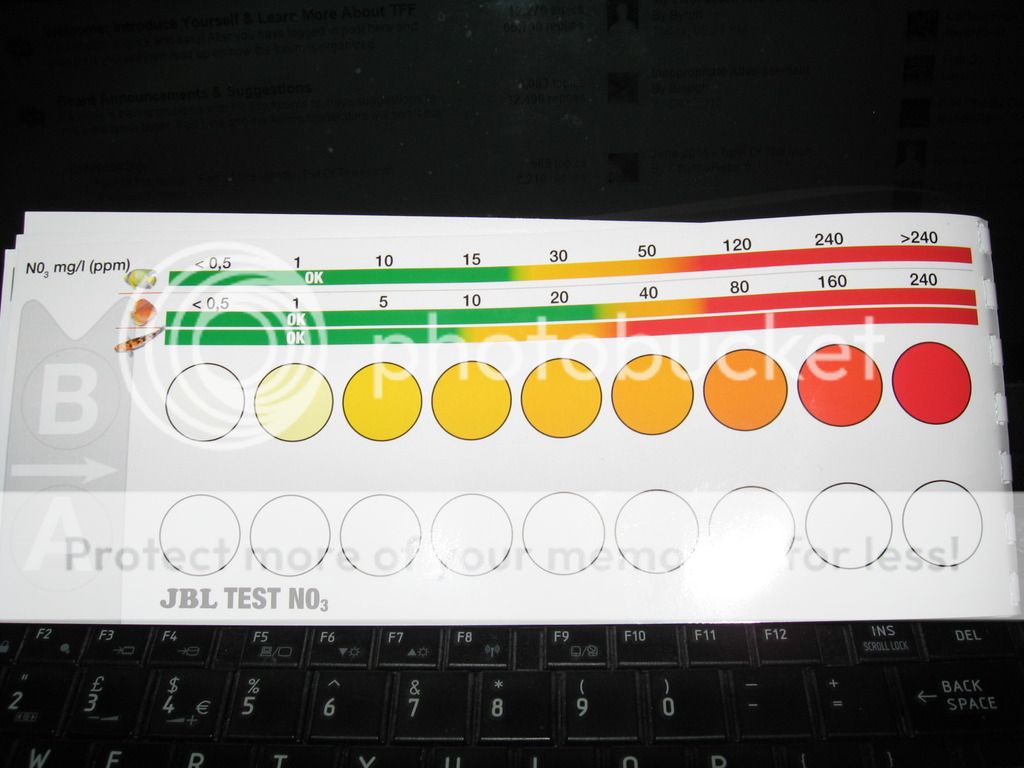I suspect it was my post in another thread that opened this discussion, so it is only fair that I add to it. I will try to be general rather than scientific for the present.
First, we must acknowledge and accept that all forms of nitrogen compounds are toxic at some level. Ammonia and nitrite affect fish at very low levels, as low as 0.25 ppm. "Affect" does not mean instant death, though it will eventually lead to death depending upon the fish species, the level of ammonia/nitrite, and some other factors. The effects of nitrate in fish are apparently very similar to nitrite, except generally it takes a higher level of nitrate, over a longer period, to cause death; simply stated, nitrate like nitrite blocks the blood's capability to carry oxygen.
Another thing to keep in mind is that nitrate is toxic to humans. The EPA in the USA prohibits nitrate in drinking water to be above 10 ppm. Even this level is dangerous to some people, such as infants and pregnant women.
At this point, we need to consider that there are also two measurement units for nitrate. The scientific community tends to use the nitrate scale, shown as "Nitrate-nitrogen," whereas the hobby kits tend to be total nitrate ions. The conversion factor is 4.43 so 10 ppm N-n (the drinking water limit) is 43.3 ppm with our hobby kits.
Back to the fish. The relationship of fish to their aquatic environment is much greater than the relationship of terrestrial animals to air. Anything and everything added to the water gets inside the fish, in its bloodstream and internal organs. So right off, we have a much greater impact on fish than would be the case with land animals. All of these "undesirables" adds to the stress on fish, which weakens the immune system and other processes.
Nitrate toxicity to fishes increases with increasing nitrate concentrations and with exposure times. Freshwater fishes appear from studies to be more sensitive than marine fishes to nitrate toxicity. Not surprising, most of the published studies have concentrated on commercial fish stocks, but some of their findings cannot be discounted for ornamental (aquarium) fishes. Nitrate levels as low as 2 and 4 ppm N-n [8 and 18 ppm using aquarium kits] significantly affected the development of fry. One study concluded that the nitrate level of 10 ppm [44.3 ppm] allowed in drinking water would long-term affect invertebrates, fishes and amphibians. To protect sensitive freshwater fish species, a maximum level of 2 ppm [9 ppm using our kits] nitrate was concluded. This latter study is "Nitrate Toxicity to Aquatic Animals: A Review with New Data for Freshwater Invertebrates," (Julio Camargo, Alvaro Alonso and Annabella Salamanca), in Chemosphere (2005), some of which is available free here:
https /www.researchgate.net/publication/8063535_Nitrate_Toxicity_to_Aquatic_Animals_A_Review_With_New_Data_for_Freshwater_Invertebrates
/www.researchgate.net/publication/8063535_Nitrate_Toxicity_to_Aquatic_Animals_A_Review_With_New_Data_for_Freshwater_Invertebrates
Dr. Neale Monks has regularly recommended that nitrate be kept below 20 ppm, and I assume he is using our aquarium test kit scale. I happen to be personal friends with Neale, and I intend to delve into this issue with him once the holidays are past us. In the meantime, his limit of 20 ppm can be found elsewhere in relation to cichlids for example. Dr. Monks has written that it is likely that all cichlid species will be affected by prolonged exposure to nitrate at 20 ppm.
A last comment. We should consider that none of the freshwater fish species we maintain in tropical aquaria are exposed to nitrates in their habitats. When nitrates are detected, they are near-zero. Fish have evolved to function best in such environments. It should make sense to all of us that elevated levels of nitrates is likely to have some impact at some point, which has been the finding of every study to date.
Byron.


 /www.researchgate.net/publication/8063535_Nitrate_Toxicity_to_Aquatic_Animals_A_Review_With_New_Data_for_Freshwater_Invertebrates
/www.researchgate.net/publication/8063535_Nitrate_Toxicity_to_Aquatic_Animals_A_Review_With_New_Data_for_Freshwater_Invertebrates